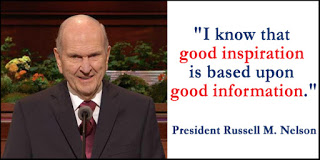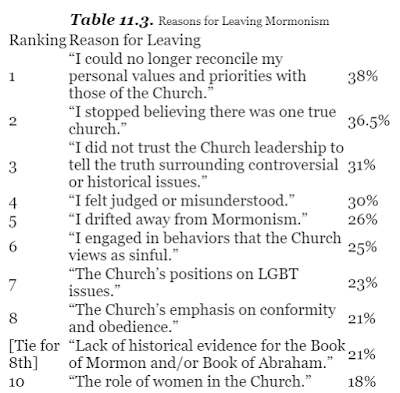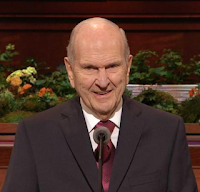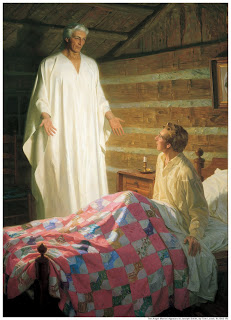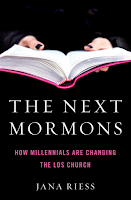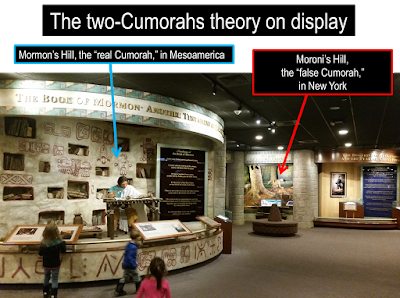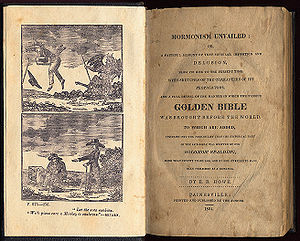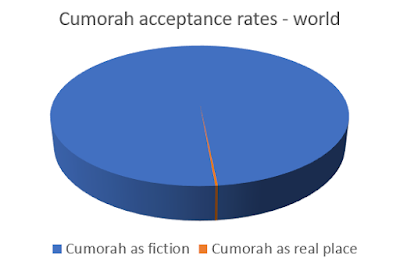As always, I emphasize that people are free to believe whatever they want. The table presents facts about the two alternatives. It is intended to clarify what others think so you can compare your own beliefs and make up your own mind.
Which do you find more compatible with your beliefs? Which is more compatible with the historical evidence? Which is best corroborated by the sciences?
|
Mesoamerica (M2C)
|
Moroni’s America
|
|
1. Mormon and Moroni lived in Mesoamerica.
|
1. Mormon and Moroni lived in North America.
|
|
2. Mormon wrote his abridgment somewhere in Mesoamerica and hid up all the Nephite records in a repository in the Hill Cumorah (Mormon 6:6), a hill somewhere in southern Mexico, before giving “these few plates” to Moroni.
(Note: In #6 below, Moroni told Joseph the record was “written and deposited near” Joseph’s home. https://www.josephsmithpapers.org/paper-summary/history-1834-1836/69)
|
2. Mormon wrote his abridgment in the vicinity of western New York and hid up all the Nephite records in a repository in in the Hill Cumorah (Mormon 6:6), the hill near Palmyra, New York, before giving “these few plates” to Moroni.
(Note: In #6 below, Moroni told Joseph the record was “written and deposited near” Joseph’s home.
|
|
3. Thinking he would not live long, Moroni adds a couple of chapters to his father’s record.
Then he travels 3,400 miles to New York, and hides the plates in the stone box, thinking he would not live long.
Or, he keeps the plates with him while he roams around Mesoamerica for decades before taking them to New York.
Or he hides them somewhere else until he is ready to take them 3,400 miles to New York.
|
3. Thinking he would not live long, Moroni adds a couple of chapters to his father’s record.
Then he hides the plates in the stone box he built in the hill Cumorah in New York, separate from his father’s depository in the same hill.
|
|
4. Later, Moroni retrieves the plates of Ether from the repository in southern Mexico and abridges them.
He adds the abridgment to his father’s abridgment, along with a sealed portion, and hides the plates again in New York.
Or, Moroni abridges the plates of Ether right after his father died, and the plates of Ether were among the few his father gave him, and after he abridges them, he returns the original plates to his father’s depository.
Or the plates of Ether are the sealed portion.
|
4. Later, Moroni retrieves the plates of Ether from the depository in New York and abridges them.
He adds this abridgment to his father’s abridgment, along with a sealed portion and his own commentary, and puts this collection of plates into his stone box. He returns the original plates of Ether to the depository in the Hill Cumorah in New York.
|
|
5. Later, Moroni returns to the repository in southern Mexico and gets a sermon and letters from his father. He adds this material to his final comments—the Book of Moroni—and returns to New York to put the finished record back in the stone box.
Or, Moroni had his father’s writings with him all along and kept them with him when he died, so they are buried with him.
|
5. Later, Moroni returns to the depository in New York and gets a sermon and letters from his father. He adds this material to his final comments—the Book of Moroni—and puts his finished record back in the stone box. He returns the source material to the depository.
|
|
6. Moroni visits Joseph Smith in 1823 and tells him the record was “written and deposited” not far from Joseph’s home. But this is a mistake because the record was written in Central America and deposited in New York. Either Joseph or Oliver misunderstood, or else Moroni misspoke.
|
6. Moroni visits Joseph Smith in 1823 and tells him the record was “written and deposited” not far from Joseph’s home. Moroni accurately describes where the record was written.
|
|
7. Joseph Smith obtained the abridged record of the Nephites and the Jaredites from Moroni’s stone box.
He translated part of these plates in Harmony and gave them back to an angel.
The Lord told him to translate the engravings on the plates of Nephi (D&C 10), even though he had reached the end of the plates (the Title Page) and hadn’t yet found these plates of Nephi.
Or, the Lord told him to translate the engravings on the plates of Nephi but Joseph wasn’t using the plates anyway (they were covered with a cloth) so it didn’t matter whether he had the plates of Nephi in Harmony.
|
7. Joseph Smith obtained the abridged record of the Nephites and the Jaredites from Moroni’s stone box.
He translated these plates in Harmony and gave them back to an angel because he was finished with them.
The Lord told him to translate the engravings on the plates of Nephi (D&C 10), but he didn’t have those yet.
|
|
8. In Harmony, Joseph translated the Title Page from the last leaf of the plates. He had it printed and delivered to the U.S. federal district court in New York as part of his copyright application.
|
8. In Harmony, Joseph translated the Title Page from the last leaf of the plates. He had it printed and delivered to the U.S. federal district court in New York as part of his copyright application.
|
|
9. On the way from Harmony to Fayette, David Whitmer said he, Joseph and Oliver encountered an old man bearing the plates who said he was heading for Cumorah. Joseph said it was one of the three Nephites.
But David was mistaken because he conflated the false tradition of the New York Cumorah with another unspecified event.
Or David misremembered, intentionally misled, etc.
The Saints book omits David Whitmer’s explanation that this messenger was one of the Three Nephites who took the Harmony plates to Cumorah because David was confused or wrong.
|
9. On the way from Harmony to Fayette, David Whitmer said he, Joseph and Oliver encountered an old man bearing the plates who said he was heading for Cumorah. Joseph said it was one of the three Nephites.
This was the messenger who had the Harmony plates and was returning them to the repository because Joseph was finished with them.
David repeated this account several times, and it was included in an official report to the Quorum of the Twelve by Joseph F. Smith, who interviewed David.
The Saints book omits this account because its editors censored all historical accounts about the New York Cumorah to accommodate M2C.
|
|
10. In Fayette, a messenger showed the plates to Mary Whitmer.
Then the messenger returned the Harmony plates to Joseph.
The Saints book claims this was Moroni because Mary’s grandson said his grandmother was mistaken.
|
10. In Fayette, a messenger showed the plates to Mary Whitmer.
Then the messenger gave Joseph the small plates of Nephi which came from the repository in Cumorah.
David said the messenger who showed the plates to his mother was the same one who took the plates to Cumorah. Mary Whitmer called him “Brother Nephi.” The 3 Nephites were among the 12 disciples, one of whom was named Nephi.
|
|
11. In Fayette, Joseph translated the small plates of Nephi (1 Nephi – Words of Mormon).
|
11. In Fayette, Joseph translated the small plates of Nephi (1 Nephi – Words of Mormon).
|
|
12. Joseph and Oliver Cowdery and others had multiple visions of Mormon’s depository in the “real” Hill Cumorah, which is somewhere in southern Mexico.
|
12. Joseph and Oliver Cowdery and others actually visited Mormon’s depository in the Hill Cumorah in New York and saw the stacks of plates and other Nephite artifacts.
|
|
13. Cumorah cannot be in New York because it is a “clean hill.”
|
13. Cumorah is in New York because hundreds of artifacts, including weapons of war, have been recovered from the vicinity of the hill.
|
|
14. Cumorah cannot be in New York because it is a glacial moraine that cannot contain a natural cave.
|
14. Cumorah is in New York because an actual room that matches the description given by Brigham Young, Heber C. Kimball, Wilford Woodruff and others has been found there.
|
|
15. Joseph Smith and Oliver Cowdery never claimed revelation about the location of Cumorah. They merely speculated. They adopted a false tradition and misled the Church.
Joseph later changed his mind and, by writing or approving anonymous articles that never mentioned Cumorah, claimed the Book of Mormon took place in Central America and that only scholars could determine where the Book of Mormon took place.
|
15. Joseph Smith and Oliver Cowdery didn’t need revelation about the location of Cumorah because they visited Mormon’s depository. They may also have had revelations that they didn’t write or even relate. E.g., JS-H 1:73-4.
They did not mislead the Church. Joseph never changed his mind about the New York CUmorah, and never linked the Book of Mormon to Central America, through anonymous articles or otherwise.
|
|
16. All the modern prophets and apostles who have identified the Hill Cumorah as the scene of the final battles were speaking as uninspired men.
They were speculating, giving their own opinions, and they were wrong.
This includes members of the First Presidency speaking in General Conference.
|
16. All the modern prophets and apostles who have identified the Hill Cumorah as the scene of the final battles were speaking as their roles as prophets, seers and revelators.
This includes members of the First Presidency speaking in General Conference.
|
|
17. The two-Cumorahs theory originated with scholars from the Reorganized Church and was adopted and promoted by LDS scholars because it’s the only explanation that fits their criteria.
Elder Joseph Fielding Smith was wrong and unqualified when he warned the two-Cumorahs theory would cause members to become confused and disturbed in their faith in the Book of Mormon.
|
17. The two-Cumorahs theory originated with scholars from the Reorganized Church and was adopted and promoted by LDS scholars because it’s the only explanation that fits their criteria.
Elder Joseph Fielding Smith was correct and prescient when he warned the two-Cumorahs theory would cause members to become confused and disturbed in their faith in the Book of Mormon.
|
|
18. The scholars’ two-Cumorah theory is correct because whenever the current Brethren have a question about the Book of Mormon, they consult the scholars at BYU who promote the two-Cumorahs theory.
|
18. The scholars’ two-Cumorah theory doesn’t fit the historical record, the affirmative declarations of Joseph and Oliver, or the prophetic statements of numerous modern prophets and apostles.
|
